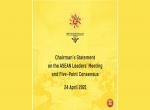One of the key challenges that faced Imran Khan as he took over as the Prime Minister of Pakistan was the economy, especially the precarious debt situation and current account deficit. An approach to the International Monetary Fund (IMF) seemed inevitable. However, while in opposition, Imran Khan had grandly declared that he would rather die than go to the IMF. To soften the impact of the back-tracking that he had to do, Imran Khan started looking at other options - bail-outs from 'brotherly' countries and 'all-weather' friend China.
Pakistan found a temporary relief as Saudi Arabia agreed to provide $3 billion to boost the forex reserves and another $3 billion in terms of deferred payments for oil purchases 1. While Saudi bailout was described as a ‘gift’, it was a reward for Pakistan’s long silence on Riyadh’s ongoing engagement in Yemen as well as the Khashoggi affair. As major countries and multinational companies boycotted the Future Investment Initiative Summit in Saudi Arabia over the diplomatic crisis that erupted after Jamal Khashoggi’s murder, Imran Khan nevertheless participated in the conference, which was held from 23rd to 25th October 2.
While the Saudi largesse helped Pakistan escape an immediate crisis, the assistance is insufficient for the long term.
To reduce its dependence (if not eliminate it) on IMF loans, whose expected conditionalities could jeopardize the China Pakistan Economic Corridor (CPEC), Imran Khan travelled to China on a five day visit from 1st to 5th November, taking along the foreign affairs minister Shah Mehmood Qureshi and Finance Minister Asad Umar. Even though Pakistan was passing through a critical time due to violent protests of the Tehreek-i-Labbaik Pakistan on the issue of the release of a Christian lady falsely accused of blasphemy, Imran Khan thought it expedient enough to undertake the journey in the expectation of a Chinese bail-out. The event marked his first visit to China as Pakistan’s Prime Minister. Though 15 agreements and MoUs were signed, including those on “agriculture, poverty alleviation, industrial cooperation and technical training as well as establishing special economic zones”, no agreement on bailing out the Pakistani economy was announced3. This was interpreted as a sign of Beijing’s unease with Imran, who had been critical of the CPEC and Chinese loans through his days as an opposition leader.
In past the IMF as well the US administration have been unwelcoming of CPEC and have repeatedly expressed concerns on the impact of Chinese loans on Pakistani economy. Secretary of State Mike Pompeo cautioned, “Make no mistake. We will be watching what the IMF does. There's no rationale for…American dollars that are part of the IMF funding, for those to go to bail out Chinese bond holders or China itself”4. It may be recalled when the newly elected PTI government was mulling the IMF option, the Agency had demanded the terms and conditions of the CPEC projects be made public before it could proceed with the loan request.
While there was no formal announcement of a specific bail-out package, Imran Khan stated that Beijing had given a big package to Pakistan. This was also corroborated by the Deputy Head of the Chinese Mission in Pakistan, who stated, “The financial support package for Pakistan is currently being worked out … it will be more than what was extended by Saudi Arabia in terms of financial grant”5. Khan too announced this news in recent meeting with the journalists at the Prime Minister House but did not disclose the amount of the package. He justified the decision to keep the amount secret stating that disclosing the amount would prompt other countries to demand money from China too and that the Chinese president had asked him to not disclose the amount6. Whatever the reality, the larger point is the deliberate ambiguity Pakistan prefers to maintain over its financial dealings with China.
It has now been confirmed that Pakistan would approach the IMF though it is yet to be seen how much the Pakistanis would borrow. As Imran is reaching out to all potential lenders in an attempt to reduce the amount that would be required from the IMF, in order to ease its tough conditionalities that accrue with a large loan package. The IMF team has just concluded its Pakistan visit where it expressed satisfaction over progress in some of the CPEC sectors, especially the energy sector, but remained concerned over the unclear financial dealings with China over these projects7. The team however was dissatisfied with tax revenue generation mechanism and some other fiscal sector related aspects. Over the past five years, Pakistan’s tax revenues increased from Rs. 2.2 trillion to Rs. 3.8 trillion but they are yet to keep pace with IMF’s expectations8. The team further suggested the need for a free-float exchange range which would prevent excessive draining of the forex reserves that happens in a managed-float exchange rate. This, however, risks depreciating the currency and further upsetting the economy’s trade balance. In expectation of these conditions, Imran Khan is desperately exploring bail-out opportunities with other bilateral and multi-lateral lenders. As economists still try to make sense of Imran’s “secret package” from China, he left for the UAE and later Malaysia to seek more funds at the time of writing.
End Notes:
- Kamran Haider and Ismail Dilawar, “Pakistan Secures $6 Billion Aid Package From Saudi Arabia”, New York, Bloomberg, October 23, 2018.
- Naved Siddiqui, “PM Khan to attend investment conference in Saudi Arabia next week”, Dawn, Islamabad, October 19, 2018.
- Staff Report, “Pakistan, China sign 15 agreements, MoUs on cooperation”, Pakistan Today, November 3, 2018.
- “Pompeo warns against IMF bailout for Pakistan that aids China”, CNBC, New Jersey, July 30, 2018.
- “Imran Khan Says China Gave Pak "Big" Aid Package, But Won't Reveal Amount”, NDTV, New Delhi November 16, 2018.
- Ibid.
- Shahbaz Rana, “IMF concerned over CPEC energy deals implications”, The Express Tribune, Karachi, November 9, 2018.
- State Bank of Pakistan Data, http://www.sbp.org.pk/ecodata/tax.pdf
Image Source: https://timesofislamabad.com/digital_images/large/2018-06-19/pakistan-s-economic-crisis-what-does-chinese-experts-say-1529403965-5664.jpg










Post new comment